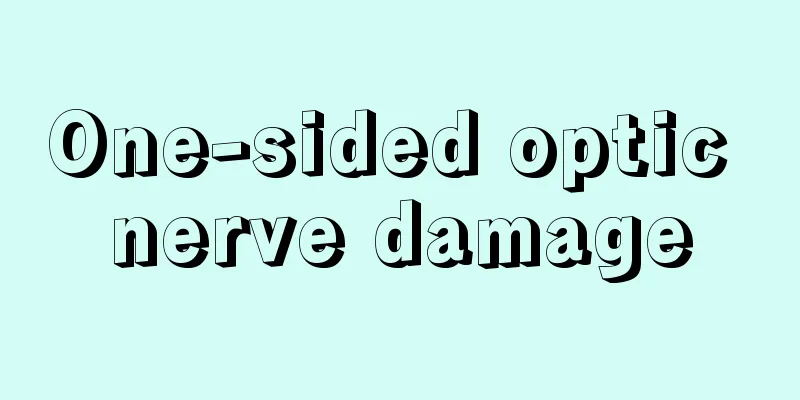One-sided optic nerve damage

|
The optic nerve belongs to the central conduction bundle. Optic nerve damage is a disease in which the conduction function is impaired due to some cause within the optic nerve conduction pathway. Damage to the optic nerve often results in visual impairment, pain and swelling in the back of the eye socket, and gradually blurred vision. Damage to the optic nerve can also cause other facial discomfort. This article introduces several manifestations of nerve damage. Let’s take a look. (1) Olfactory nerve injury often presents with ethmoid fracture or frontal-basal brain contusion, such as cerebrospinal fluid leakage and partial or complete loss of olfaction on one or both sides. (2) Optic nerve injury is often accompanied by anterior and middle cranial fossa fractures involving the orbital apex and optic canal. Immediately after the injury, the patient experiences decreased vision or even blindness, direct light reflex disappears, and indirect light reflex is normal. If the optic chiasm is damaged, binocular vision will be impaired and visual field will be lost. (3) Injuries to the oculomotor, trochlear, abducens, and ophthalmic branches of the trigeminal nerves are often manifested by fractures of the lesser wing of the sphenoid bone, petrous part of the temporal bone, and maxillofacial region. Patients with oculomotor nerve injury may experience diplopia, ptosis, dilated pupils, loss of light reflex, and eye deviation to the outside and below. Patients with trochlear nerve injury may experience diplopia when gazing downward. Patients with abducens nerve injury may cause limited abduction of the eye on the injured side and esotropia. Patients with trigeminal nerve injury may experience loss of corneal reflex, facial sensory disturbance, chewing weakness, and occasionally trigeminal neuralgia. (4) Injury to the facial and auditory nerves often involves fractures of the petrous and foraminal parts of the temporal bone, and manifestations such as facial paralysis, loss of taste in the anterior 2/3 of the tongue on the same side, keratitis, tinnitus, vertigo, and sensorineural hearing loss may occur at different times after the injury. (5) Damage to the glossopharyngeal, vagus, accessory, and hypoglossal nerves rarely occurs. Occipital bone fractures are common. Symptoms include difficulty swallowing, loss of pharyngeal reflex, loss of taste in the posterior 1/3 of the tongue, hoarseness, and lowered shoulders. The tongue muscles on the injured side atrophy and the tongue is stretched to the affected side. 1. Brachial plexus injury The main manifestations are motor and sensory disorders in the nerve root distribution area. Injury to the upper part of the brachial plexus is manifested by drooping of the entire upper limb, adduction of the upper arm, inability to abduct or externally rotate, adduction and extension of the forearm, inability to pronate, supinate or flex, and a narrow area of sensory impairment on the outside of the scapula, upper arm and forearm. Injury to the lower brachial plexus is manifested by atrophy of the small muscles of the hand, which become claw-shaped, sensory loss on the ulnar side of the hand and medial forearm, and sometimes Horner's syndrome. 2. Axillary nerve injury The main manifestations are movement disorders, reduced shoulder abduction range, and skin sensory disorders in the deltoid area. The deltoid muscle atrophies, the shoulder loses its rounded appearance, the acromion becomes prominent, and a "square shoulder" is formed. 3. Musculocutaneous nerve injury After the musculocutaneous nerve emerges from the lateral bundle, it obliquely passes through the coracobrachialis muscle, descends between the biceps brachii and the brachialis muscle, and sends out branches to innervate the above three muscles. The terminal branch is on the outside slightly above the elbow joint, passes through the deep fascia of the arm, and is renamed the lateral antebrachial cutaneous nerve, which is distributed in the skin on the outside of the forearm. Sensory disturbance of the skin of the biceps, brachialis, and lateral forearm after injury to the musculocutaneous nerve. 4. Median nerve injury The flexion function of the first, second and third fingers is lost; the thumb opposition movement is lost; the thenar muscles atrophy and ape-palm deformity occurs; the sensation of the distal phalanx of the index and middle fingers is lost. 5 Radial nerve injury Radial nerve injury is the most vulnerable nerve in the body and often occurs in conjunction with mid-shaft humeral fractures. The main manifestation is the loss of wrist extension strength, with "wrist drop" being a typical symptom; loss of thumb abductor and finger extensor strength; and complete loss of sensation between the first and second metacarpal bones on the dorsum of the hand. 6. Ulnar nerve injury The distal phalanxes of the fourth and fifth fingers cannot flex; the interosseous muscles are paralyzed, and the finger adduction and abduction functions are lost; the hypothenar eminence atrophies and becomes flat; and the sensation of the little finger completely disappears. 7. Femoral nerve injury Movement disorders, paralysis of the anterior thigh muscles, difficulty lifting the legs when walking, and inability to extend the calves. Sensory impairment, sensory impairment of the skin on the front of the thigh and the inner side of the calf. Quadriceps atrophy and patellar prominence. The knee reflex disappears. 8. Sciatic nerve injury When the sciatic nerve is completely severed, the clinical manifestations are similar to those of combined tibial and peroneal nerve injury. The ankle and toe joints have no autonomous movement, the foot drops and presents a horseshoe-like deformity, and the ankle joint can move in a swinging manner as the affected limb moves. The calf muscles atrophy, the Achilles tendon reflex disappears, the knee flexion force is weak, and the knee extension is normal. Except for the inner side, the skin sensation of the calf is often only reduced due to compensatory compression of the cutaneous nerve. When part of the sciatic nerve is injured, the biceps femoris is often paralyzed, while the semitendinosus and semimembranosus muscles are rarely affected. In addition, there is often throbbing pain, numbness or burning pain in the calves or soles of the feet. 9. Common peroneal nerve injury In drop foot deformity, in order to prevent the toes from dragging on the ground, the patient lifts his feet high when walking and takes a striding gait; the foot and toes cannot dorsiflex, abduct or evert; and there is loss of sensation on the dorsum of the foot and the anterior and lateral side of the little toe. |
<<: One side of the body feels cold
>>: Bone protrusion on one side of the cervical spine
Recommend
What are the hazards of hair oil
Women who love beauty often go to hair salons to ...
What to do with intestinal ulcer
If the intestines absorb too many irritating ingr...
People should always do a good job in preventing lung cancer
Lung cancer is a common disease that will add a l...
Why are there so few eyebrows
Eyebrows are indispensable for all the young men ...
What is the best way to clean gold
I believe that gold is not unfamiliar to everyone...
If there is prostate cancer in the family, will it be inherited?
Many people have questions about prostate cancer:...
Lutein Eye Drops
Lutein eye drops are a new dosage form of sensiti...
Can I eat grapefruit when I have stomachache
Stomach disease is a condition that many people w...
What are the dangers of frequent hair dyeing
Hair dyeing has become a fashion nowadays. Some y...
Anemia and weight loss may also be early symptoms of colon cancer
Nowadays, many people suffer from colon cancer, m...
Symptoms of bone hyperplasia in fingers
As the physical functions of middle-aged and elde...
What are the effects of holding urine in normal times
Many people in life have the bad habit of holding...
What is the treatment for advanced lung cancer? The best treatment for advanced lung cancer
Lung cancer is a common cancer in life. Most of t...
The efficacy and function of camphor oil
In nature, many trees also have magical effects a...
What are the benefits of frequent teeth tapping
Perhaps many people have a habit in their daily l...









